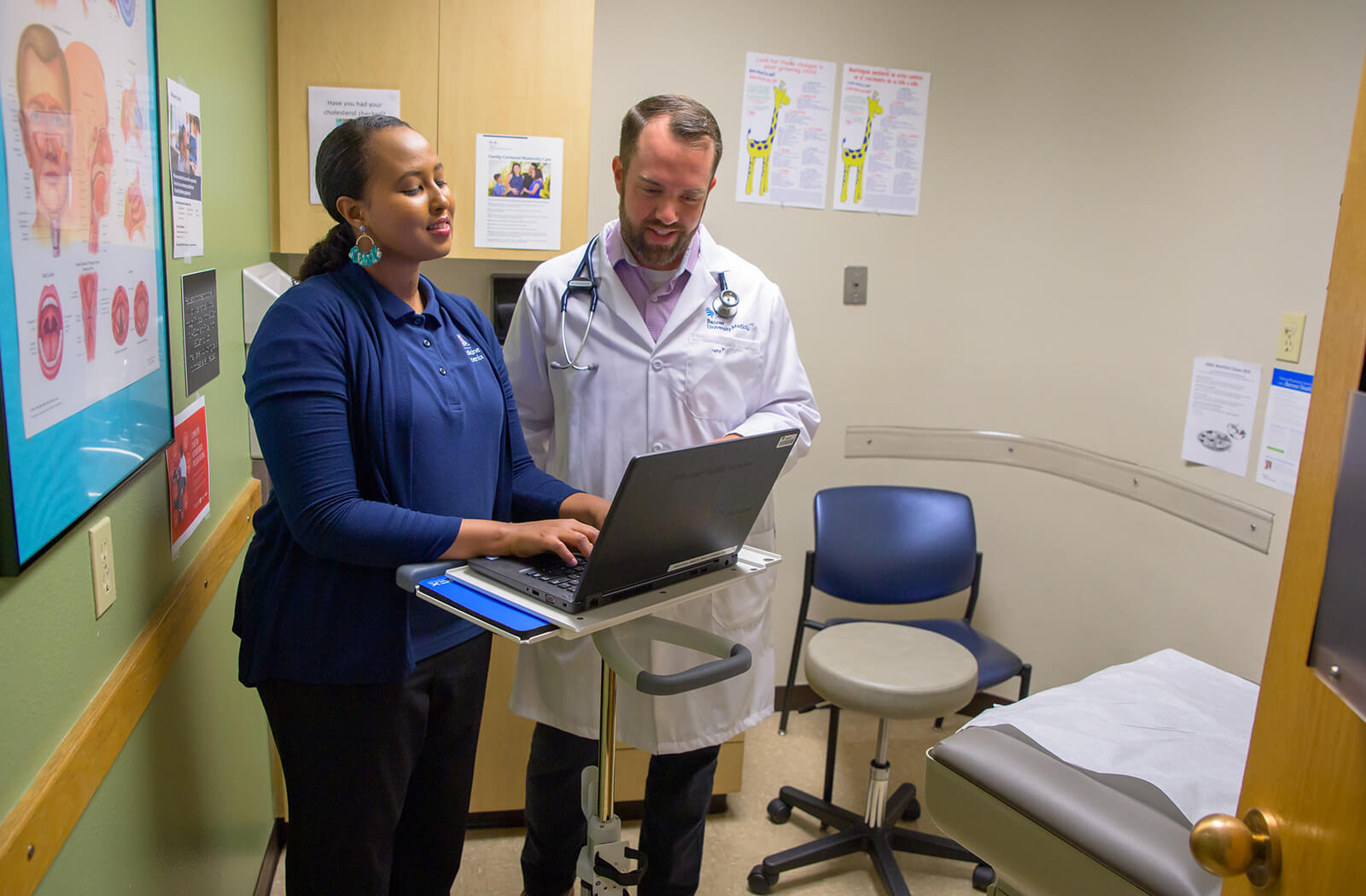
Electronic Health Record Documentation is Taxing Family Doctors

Not enough time with your physician? Your new electronic health record may be to blame.
A study conducted by physicians at the University of Arizona College of Medicine – Phoenix revealed that doctors are spending more time with the electronic health record (EHR) than in face-to-face consultation with patients. Some reported spending up to 33 hours each month on the administrative task.
The research, published in the February 2020 issue of the journal Family Medicine, showed that most physicians spend a significant amount of time during work hours and after hours on tasks related to the EHR. The amount of time varies widely between zero to 33 hours each month. The typical office visit in a family medicine clinic lasts between 20 and 40 minutes; yet, on average, physicians in the study spent between 41 and 65 minutes updating the EHR for every patient they saw.
“The EHR is almost universally pointed to as a reason for burnout and dissatisfaction among physicians,” said Jacob Anderson, DO, co-author of the study and a clinical assistant professor of Family, Community and Preventive Medicine at the College of Medicine - Phoenix. “Anecdotally, there has been a sense that physicians spend a lot of time on the EHR, but few studies have captured this objectively. This study was the first step at quantifying our own local patterns in order to be able to more fully understand current use, with the hopes of being able to identify areas for improvement.”
Dr. Anderson, Jason Leubner, MD, and Steven Brown, MD, all faculty in the Family Medicine Residency program, analyzed six months of EHR use of 24 family medicine trainees and 10 family medicine physicians at the College of Medicine – Phoenix. The study period lasted from January to June 2017. Banner – University Medical Center Phoenix implemented an EHR system by Cerner in September 2016.
“Time spent in the EHR takes focus away from the physician-patient relationship and interaction during the office visit; but it also absorbs physicians’ time outside of their work day, which detracts from activities that are protective against burnout like time with family, time spent teaching and community service time,” Dr. Anderson said.
Dr. Anderson added that while many aspects of the EHR contribute to improving the safety and quality of care, it is often seen as a barrier between patients and their physicians.
“The EHR was primarily created to improve safety, and it has resulted in numerous, incredible improvements in care,” Dr. Anderson said. “It is important to not lose sight of the fact that; while we are still a long way from the ideal EHR system, we have capabilities that improve the quality of care we provide. However, it has made care more complicated in many ways and the demands on primary care physicians, as a result, have never been so great. I’m optimistic that our systems will continue to develop and improve.”
Although the main goal of the study was to better understand the issue in an objective way, researchers hope that the results encourage others to investigate EHR use and interventions that may lead to improvements.
“This issue and the administrative burden of the EHR disproportionately affects primary care physicians,” Dr. Anderson said. “It is important that we advocate for interventions to improve EHR use, like technological improvements and the use of medical scribes, and we advocate for appropriate incentivization for the important administrative work.”
Primary care scribes could be one of the answers to improving care and efficiency in the primary care setting. The College of Medicine – Phoenix is exploring this avenue through its Primary Care Medical Scribe Program that provides students early exposure to primary care and enhances the quality of physician-patient interactions while reducing the amount of time physicians spend on administrative tasks.
“This study helped to inform two of the aims of the Primary Care Scribe Program: to improve the physician-patient relationship and decrease physician burnout,” Dr. Anderson said. “Thus far, the scribe program has had incredibly positive results in both of these areas.”
Dr. Anderson said they will continue to study the use of the EHR with residents and attending physicians with hopes of being able to improve use.
About the College
Founded in 2007, the University of Arizona College of Medicine – Phoenix inspires and trains exemplary physicians, scientists and leaders to advance its core missions in education, research, clinical care and service to communities across Arizona. The college’s strength lies in our collaborations and partnerships with clinical affiliates, community organizations and industry sponsors. With our primary affiliate, Banner Health, we are recognized as the premier academic medical center in Phoenix. As an anchor institution of the Phoenix Bioscience Core, the college is home to signature research programs in neurosciences, cardiopulmonary diseases, immunology, informatics and metabolism. These focus areas uniquely position us to drive biomedical research and bolster economic development in the region.
As an urban institution with strong roots in rural and tribal health, the college has graduated more than 1,000 physicians and matriculates 130 students each year. Greater than 60% of matriculating students are from Arizona and many continue training at our GME sponsored residency programs, ultimately pursuing local academic and community-based opportunities. While our traditional four-year program continues to thrive, we will launch our recently approved accelerated three-year medical student curriculum with exclusive focus on primary care. This program is designed to further enhance workforce retention needs across Arizona.
The college has embarked on our strategic plan for 2025 to 2030. Learn more.